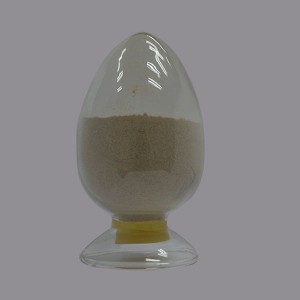Food and beverages industry will spearhead the carboxymethyl cellulose market, with oil drilling industry on the trail, says the Fact.MR report. Carboxymethyl cellulose is utilized in oil drilling application for protecting mud wells by acting as mud stabilizer, and water retaining agent. High viscosity and degree of substitution are other key attributes of carboxymethyl cellulose, which have led their adoption in oil drilling industry.
It is common for many heavy crudes to show similar characteristics, including high total acid number, low hydrogen/carbon ratios, high viscosity, high carbon residues, and a generally high level of asphaltenes, sulfur, heavy metals, and nitrogen. Because there is no universally accepted definition of what constitutes heavy crude, the term is relative in different regions. In the North Sea, for example, heavy crude is typically between 15°API and 20°API. In Canada, heavy crudes are as low as 8°API. In Alaska’s North Slope, many current production crudes fall between 18°API and 21°API, and are known as “high-viscosity crudes.” However, potentially there is more lower-API, heavier crude with lower fluid temperature that can be extracted with the correct technology and design.
For greenfield developments, engineers design the facilities to the correct size and configuration for the crude emerging from the field based on field tests done before production. Brownfield developments are more complex. There are cases in which a given facility can be upgraded to take on heavier crude. “Sometimes that is not feasible … sometimes you have to remove and replace,” he said.
Carboxymethyl cellulose also seeks adoption as stabilizing agent during the production of metal nanoparticles, which are used in various applications such as ice packs for retaining lower freezing point. Employment of carboxymethyl cellulose as stabilizing agent has curtailed the production cost and consumption of its expensive cooling counterparts, which in turn is expected to bode well for growth of the carboxymethyl cellulose market in the forthcoming years.

Some of the key countries that are projected to contribute extensively towards the robust growth of the global zonal isolation market are Saudi Arabia, Canada, the U.S., Mexico, Russia, the UAE, Brazil, China, and Iran.
Considering different factors, for example, manufacturers, product type, and areas, the worldwide Bio-surfactants advertise is portioned. Further the report chiefly displays the organization profiles of key makers in the Bio-surfactants market and additionally item pictures, general income, value, piece of the overall industry, measure from 2018 to 2023 and contact points of interest of these players.
Surfactants market is segmented into five regions: Europe, Latin America, Asia Pacific, North America, and the Middle East & Africa. Among these, Asia Pacific is the leading region of the market and is expected to grow with an encouraging CAGR. Growing population coupled with increasing purchase power parity in the developing nations are primarily driving the growth of the surfactants market. Moreover, the burgeoning retail sector in the region coupled with the penetration of smartphones has made the availability of consumer goods easier, which, in turn, is surging the market growth. The homecare application is the largest applications of surfactants accounted for a market share of over 30%. The growing purchasing power in the region has propelled the demand for home care and personal care products mainly in China and India.
Nor do the 16,200 members of the Park Slope Food Co-op in Brooklyn, which buys one cow per week from Jaffe. “If hydrofracking is allowed in New York State, the co-op will have to stop buying from farms anywhere near the drilling because of fears of contamination,” says Joe Holtz, general manager of the co-op. That’s $4 million in direct sales, with economic multipliers up and down the local food chain, affecting seed houses, creameries, equipment manufacturers and so on.

The application of asphaltene inhibitors is a necessary business cost for producing many of the crudes today. Without them, many of the heavier crudes would never come to market.
This is a breakdown of recent ratings and recommmendations for Flotek Industries and HighCom Global Security, as reported by MarketBeat.
Oil slop breakers maximise oil phase recovery by treating emulsions and drilling slops at the source, which reduces transportation and processing costs, as well as environmental impact.
The European region is expected to show steady growth during the forecast period. The developed electronics and personal care industry in the region is the major factor driving the growth of the market. Moreover, the developed automobile industry in the region has expected to boost the demand for surfactants owing to its applications in paints and coatings industry. Furthermore, the growing demand for processed food is also expected to contribute to the growth of the market owing to its use as food emulsifiers.
Soy Lecithin Market Is Estimated to Reach $975.42.8 Million by 2023 at a CAGR of 5.6% – Press Release | Well Cementation Fluids In Oil Field Related Video:
We now have our own gross sales team, style and design workforce, technical crew, QC workforce and package group. We now have strict quality manage procedures for each system. Also, all of our workers are experienced in printing industry for Defoamers , Carboxymethyl Cellulose For Drilling Fluid , Dispersing Agent For Oil Well Cementing , Excellent quality, competitive price, punctual delivery and dependable service can be guaranteed. For further inquires please do not hesitate to contact us. Thank you - Your support continuously inspires us.




